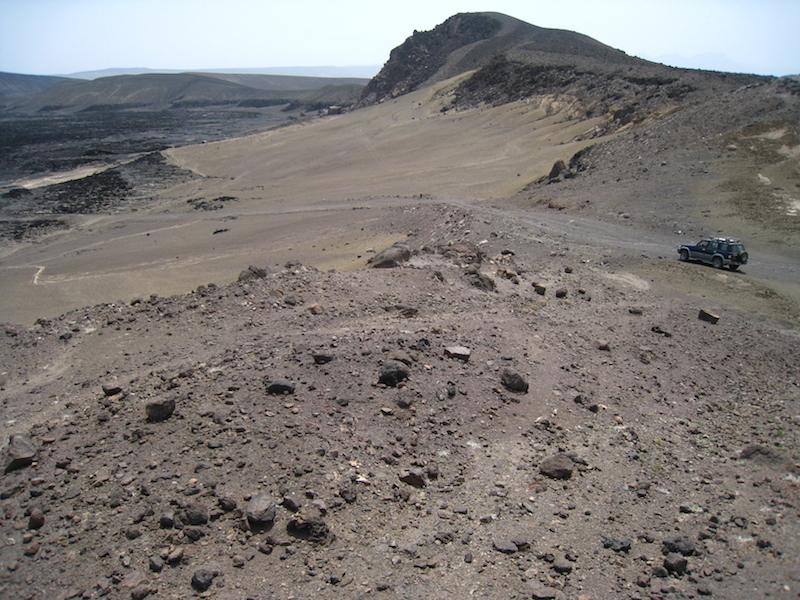Petra was built around 100 BCE and served as the capital of the the Nabataeans, an ancient Semitic people that settled in southern Jordan. At the time, the Nabateans were undisputed masters of the Arab trade routes, so their architecture reflects a unique mélange of Graeco-Roman, Egyptian and Mesopotamian styles. As the title of this post states, Petra is an archaeological paradise.
When I left the hotel at 5:30am, I still didn’t have a bus reservation. The concierge had tried to sneak me onto a bus with an Air France flight crew, but since they canceled at the last minute, I was left high-and-dry the night before my trip. Luckily, when I got to the office in the morning, tickets were still available. Whew.
I bought a falafel sandwich, climbed into the bus, and promptly went back to sleep. By the time I woke up, we were well outside of Petra, and at 10:15am pulled into the Petra Visitor’s Center parking lot. I bought a day pass for 21 JOD (~$27), handed my ticket to the “tourist police” (I love that term), and began my day-long journey.
After 10-15 minutes I entered the Siq, a twisting narrow gorge that runs for 1200m. Flanked by towering, geologically exotic walls, I walked slowly, enjoying the curvature of rock, the delicate and creeping mid-morning shadows.
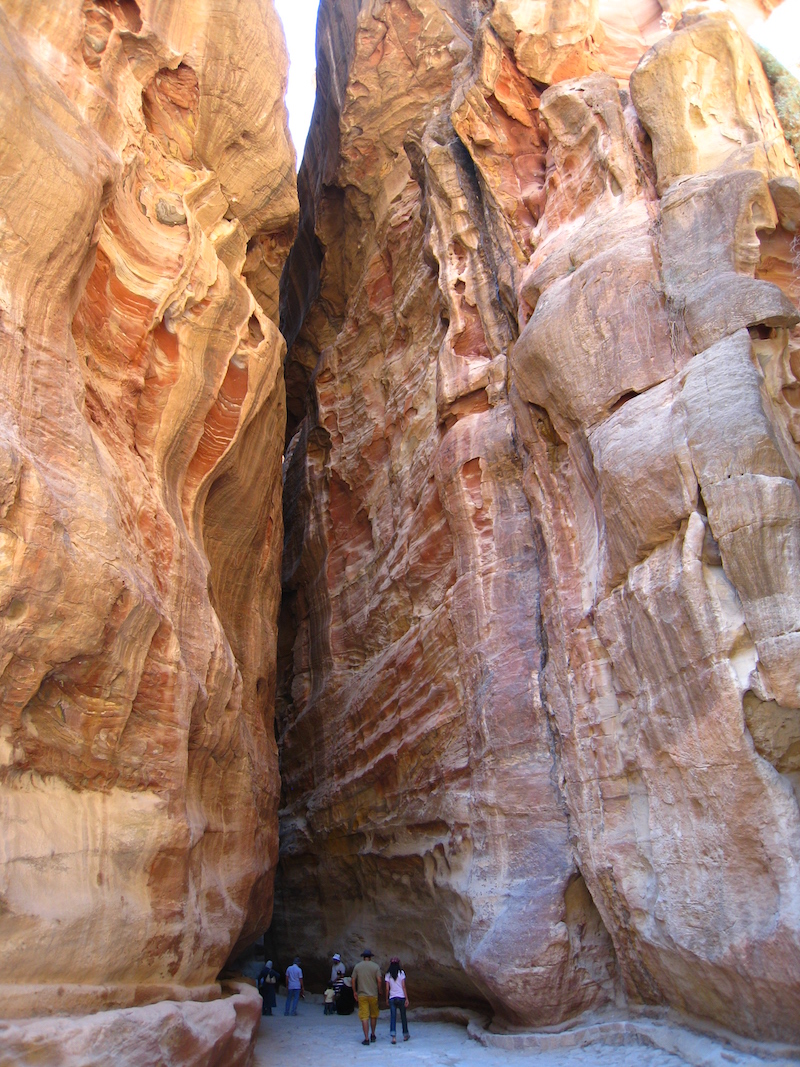
The Nabataeans used water channels to ferry water through the 1200m long gorge.
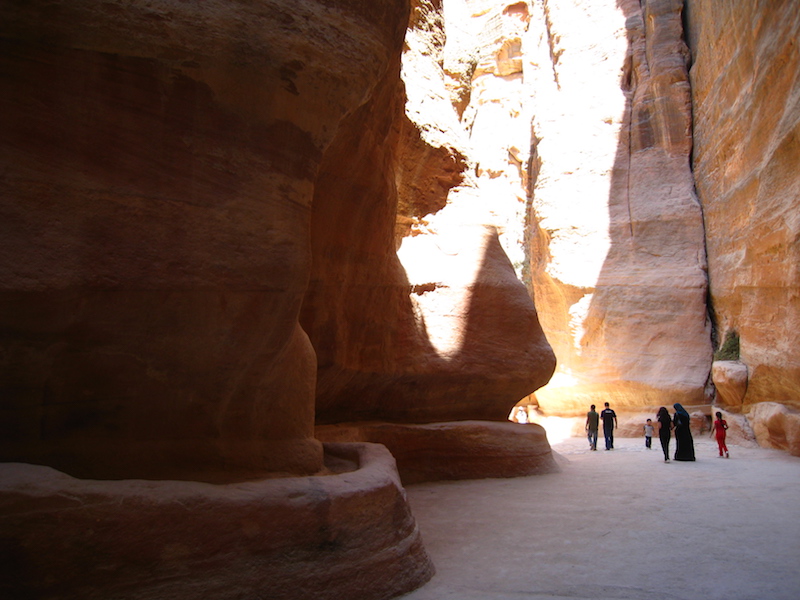
Bend after bend I meandered through the canyon, pausing to drink up the atmosphere. Before long, I neared the end of the canyon. Despite my shabby cinematography, I did my best to capture the end of the Siq as it opens up to the Treasury. Cue the Indiana Jones music.
http://www.youtube.com/watch?v=xrA1qj4Khw0
Dwarfed by this otherworldly monolith, I felt like I was in a George Lucas dream. The Treasury (Arabic: Al-Khazneh) is the pride and joy of Petra, undoubtedly the most famous attraction amidst the Nabataean ruins. Fortunately, there weren’t any booby traps or 700-year old knights to distract my endless attempts to capture the scene with my camera. Just call me Indiana Perlman.
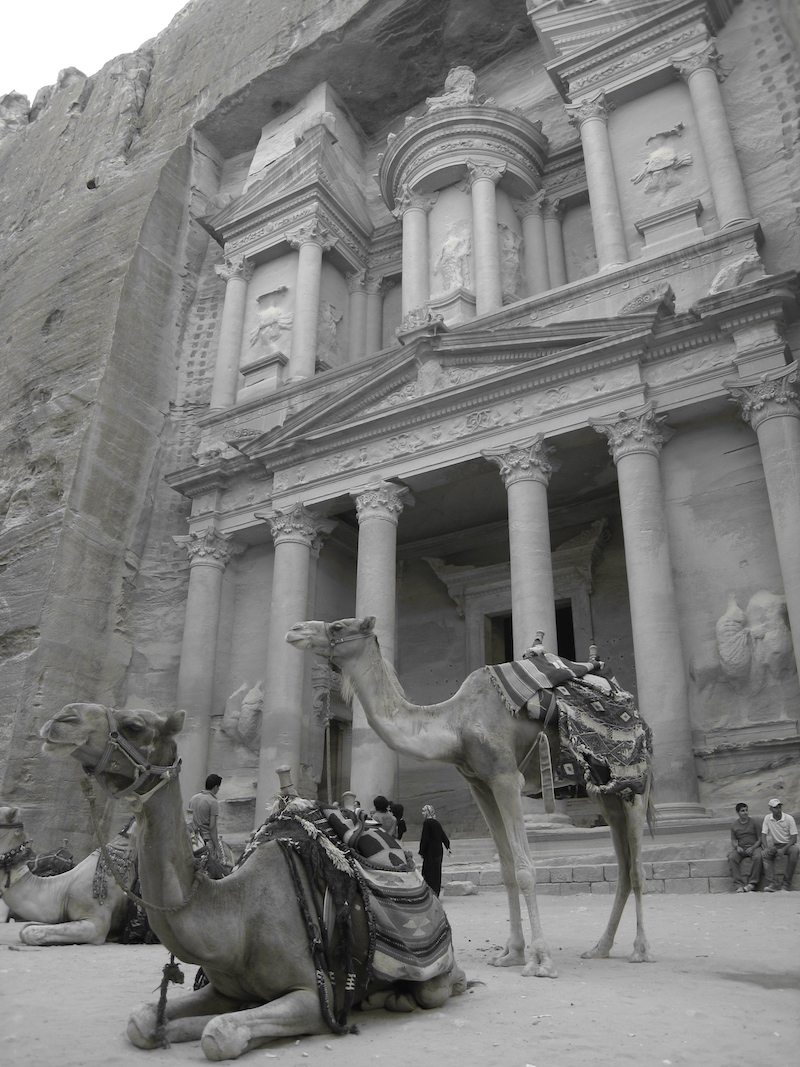
While I could have spent all day lounging and marveling, there was plenty more to see. I climbed up to the High Place of Sacrifice, where Nabataeans held important religious ceremonies and sacrificed animals to honor the Gods. Much of the path up the gorge was marked by stone-cut steps.
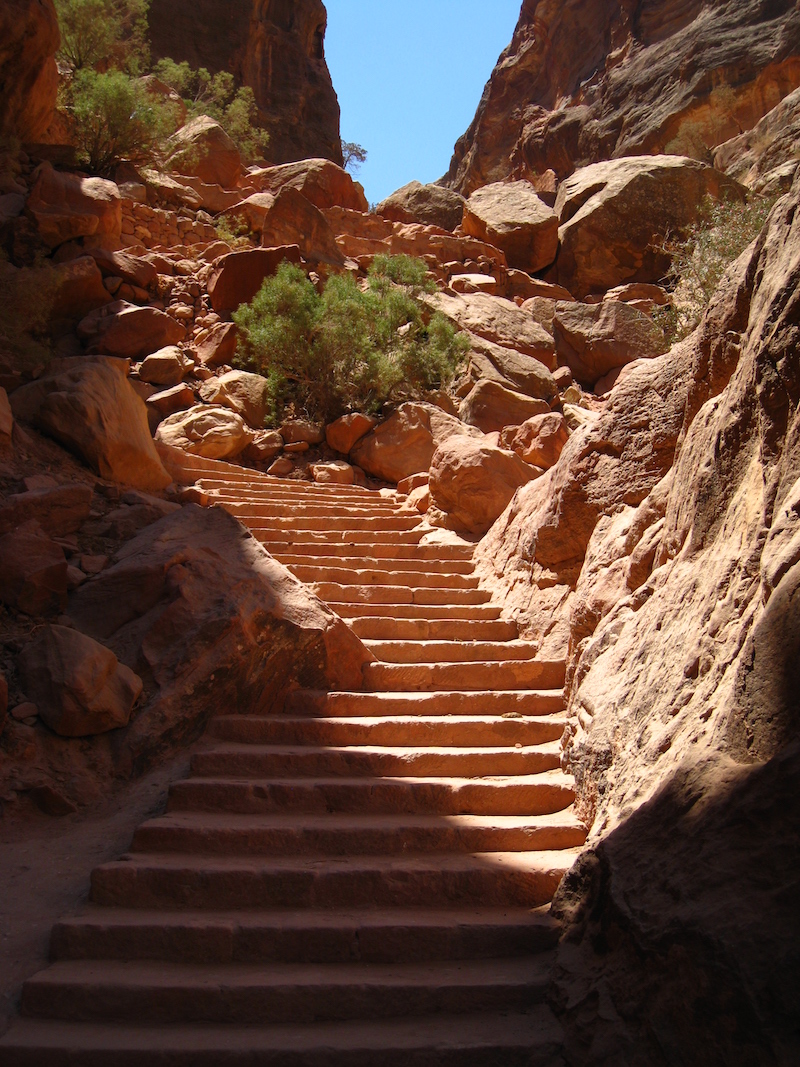
After the High Place of Sacrifice, I trekked back down towards Colonnaded Street, a once-bustling avenue in Petra’s city center. The marble pavement is still visible, as are a few columns. Archaeologists from Brown University have been excavating here since 1993.
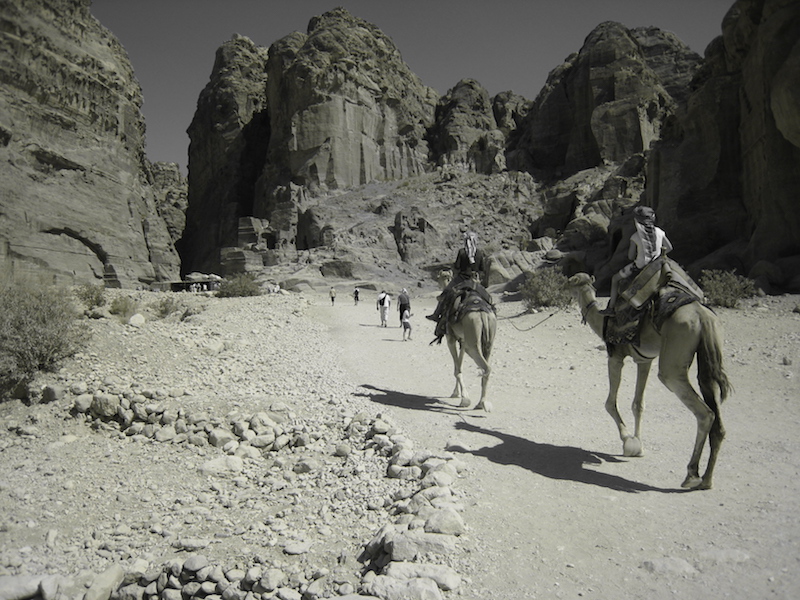
When I was asking around for directions to the Monastery, a young, donkey-reigned child almost coerced me into paying for a ride. I told him that I wanted to walk, but he quickly pointed out that it was a two and a half hour climb. There was something about his salesmanship that didn’t feel right, so I decided to pass. That, and most of the donkeys looked flat-out fatigued.
So did the camels. Occasionally they would make these loud, wailing sounds that I would equate to a drowning hand-horn. Maybe they were just saying hello, but it sounded like they were pretty beat.
The Monastery (Arabic: Ad-Deir) is Petra’s second-most famous structure, another large, impressive, architecturally stunning chunk of carved-out stone. The guidebook mentions that it’s over 800 stairs to reach the Monastery. I stepped off 709, but who’s counting?
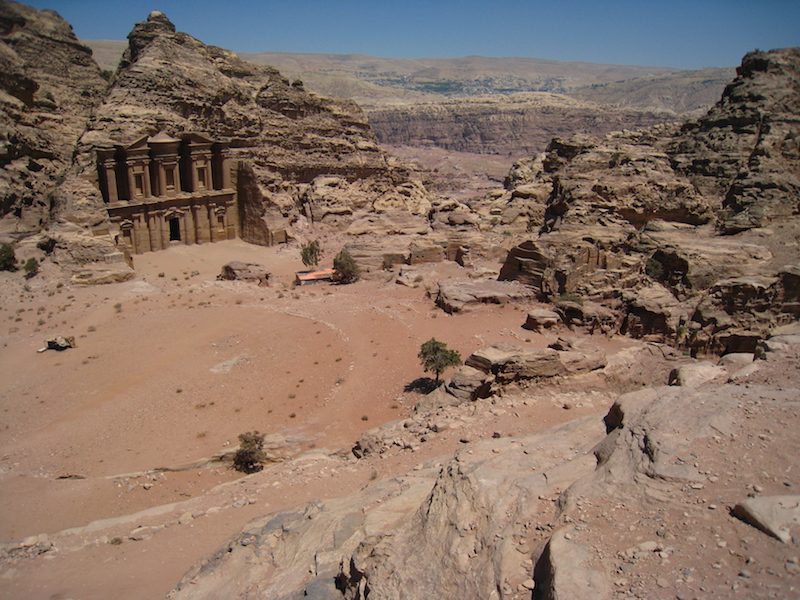
By the time I climbed down to the canyon floor, it was almost time to leave. I had been walking for more than 5 hours and hadn’t stopped to eat or drink anything. I felt like the fatigued donkeys and camels. I hurried back through the canyon, away from the Monastery, through Colonnaded Street, past the Treasury (stopped and took 20 more pictures), through the Siq, and finally emerged out of the canyon. I bought myself some ice cream at Indiana Jones’ Snack Shop, bid farewell to Petra, and promised that I would return again.
##
It’s my last night in Amman, and I leave in a few hours for Damascus. Syria, here I come! Stay tuned for more updates.
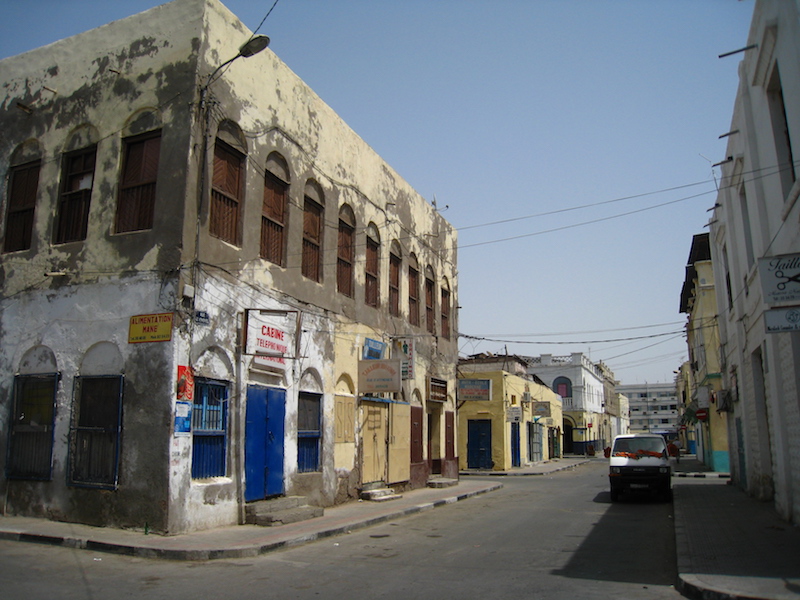
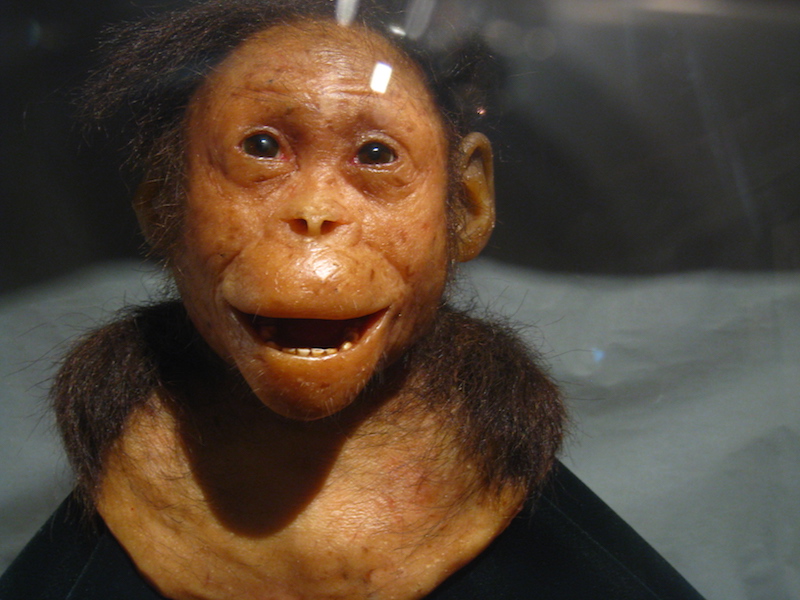
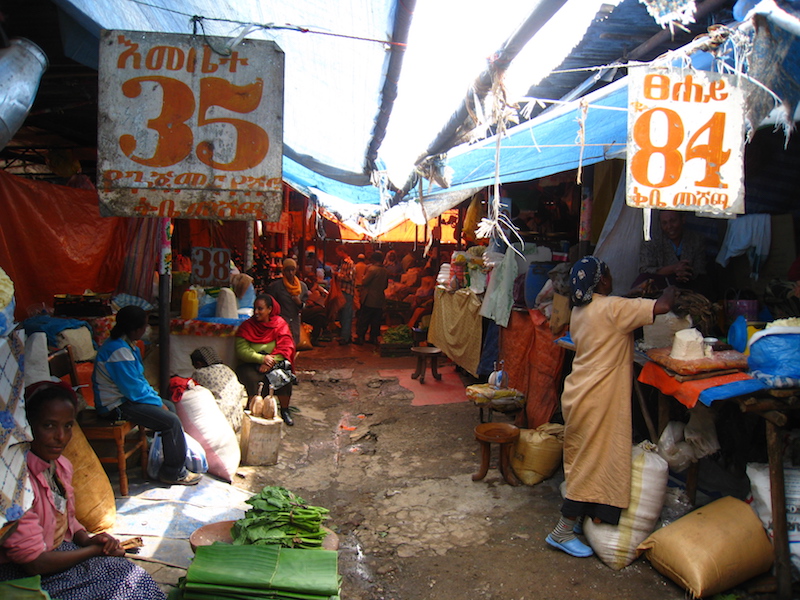


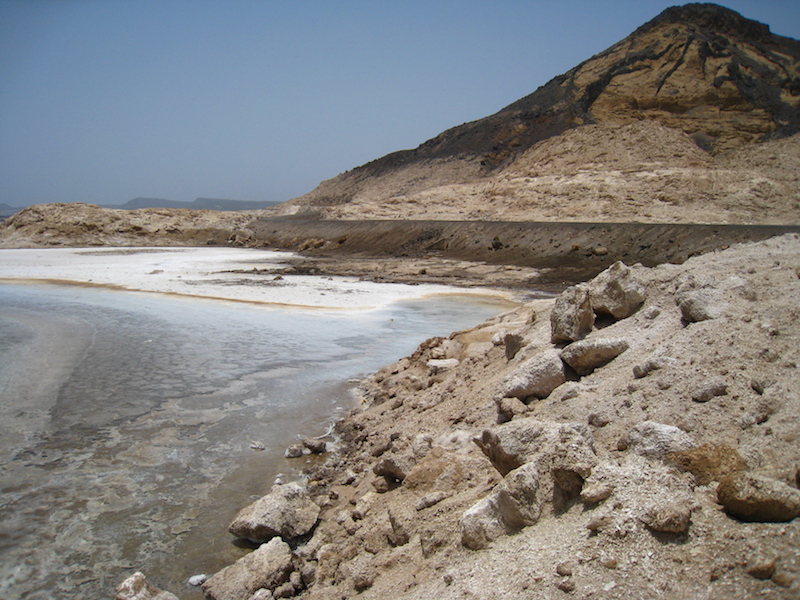 After Lac Assal, we off-roaded into a petrified lava field, a lunar landscape not far from where the original “Planet of the Apes” was filmed. I ran across shards of what was once molten liquid and darted into a lava tube to escape the relentless heat.
After Lac Assal, we off-roaded into a petrified lava field, a lunar landscape not far from where the original “Planet of the Apes” was filmed. I ran across shards of what was once molten liquid and darted into a lava tube to escape the relentless heat.